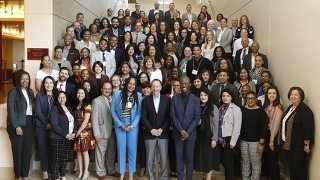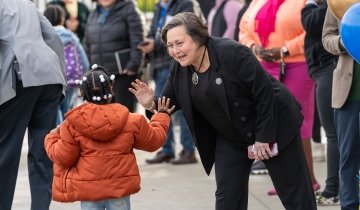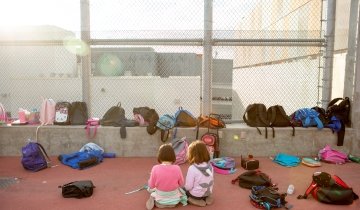Bright and early on a March morning, more than 80 principals from Los Angeles Unified are sitting at neatly arranged tables in USC’s Galen Center. This day, all day, they are talking about race, racism and racial equity in their schools. They are often uncomfortable and vulnerable and perhaps a little shy.
At a podium before them, Provost Professor Shaun R. Harper, the executive director of the USC Race and Equity Center, is asking them to recall how they first learned about race. This is the first day of an intensive, extensive process designed to build racial equity across the country’s second-largest school district.
Tentative hands go up to speak after long pauses. Harper doesn’t mind the wait. Over the course of the day, the hands will go up faster. When they do speak, many principals talk of biases learned from family-centered experiences.
“What was the process of learning and unlearning those problematic things?” Harper responds. “Did we just convince ourselves that we became socially conscious, equity-minded, woke people and therefore no longer carried those things we carried with us when we were young?”
The goal here is to empower principals to understand the concepts of racial equity, and then to do them.
“Today USC Rossier and LAUSD are united by a common mission: to enhance educational equity and improve outcomes for all students,” Karen Symms Gallagher, the Emery Stoops and Joyce King Stoops Dean of USC Rossier, tells the participants earlier in the morning. “Your leadership on racial equity will make a difference for our children and our communities.”
Early designs
LAUSD and the USC Race and Equity Center had their first conversations about the partnership last fall. In October, Harper announced the LAUSD Racial Equity Leadership Academy at a public forum featuring Gallagher and superintendent Austin Beutner.
From October to March, Harper says he was on the phone with Beutner at least once a week to design the academy, if not in the district administration building itself. Groups of teachers, principals and students all gave feedback on the plans, as did the six local superintendents.
“They respected us as experts on this topic,” Harper says following the event. “It never felt like they were being heavy-handed.”
Harper and his team at the USC Race and Equity Center designed the academy to be more than a one-off event. In fact, the academy runs for two years. For the next five months, participants will engage in monthly gatherings at the university to learn about different aspects of racial equity. At the same time, they will devise a coherent, actionable racial equity plan to implement at their schools. The remaining 18 months will be spent implementing those plans with coaching from Center staff.
On top of the academy, the USC Race and Equity Center will also be doing more than 600 observations and interviews across the district as part of a report holding the district accountable.
Wanting the work
Local district superintendents chose the 87 principals in the first cohort of the academy—Harper fully expects more cohorts to follow—based on those who had shown interest in the work and maybe had related discussions with colleagues, among other factors. The end result is a group of racially diverse school leaders who will be getting to know each other well over the next few months.
“Principals have been wanting to have these conversations, but more importantly these specific conversations and actions they can take at their school,” says Darnise Williams EdD ’09, the district’s lead on the partnership. “They were having those hard conversations. They were admitting they don’t have the answer and they decided to work together, and that’s going to make them stronger leaders.”
Harper says that the Center’s intensive model is designed to do what a one-off event cannot by creating a path of success for each principal’s racial equity work. Numerous challenges are considered and planned for. In the next session, in April, principals will begin talking about the difficult work of implementation.
“A lot of times, when people create activities, they don’t think through all these questions,” Harper says. “What might cause this thing to fail? What are some of the barriers? Who exactly is involved? We force them to think through each of these components in quite a lot of detail.”




